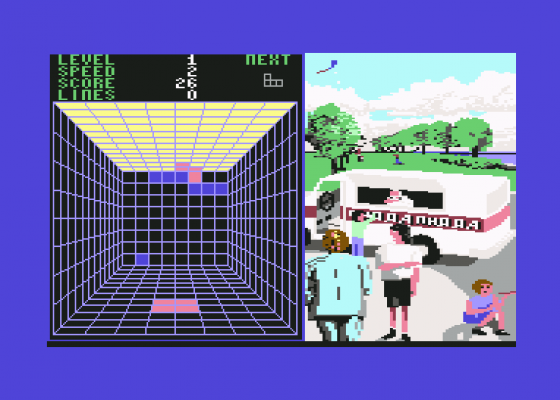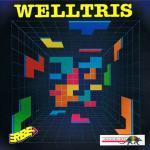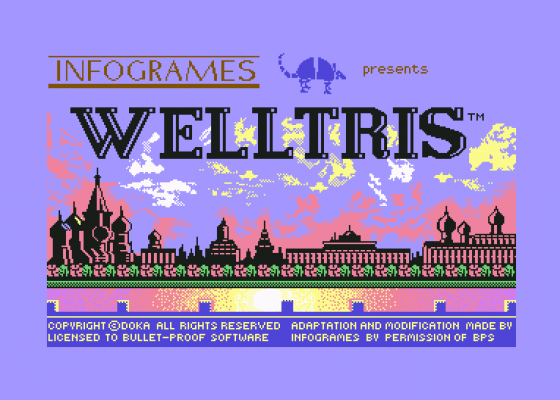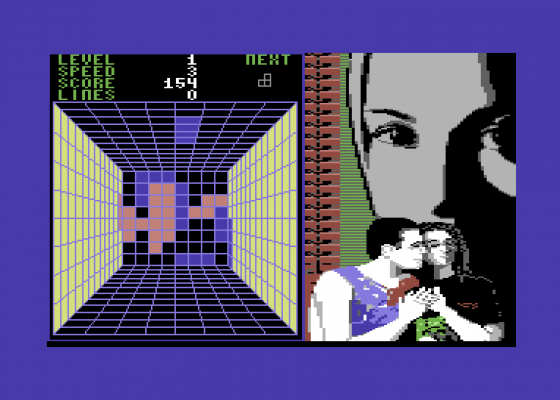
Future Publishing
 1st March 1991
1st March 1991
Categories: Review: Software
Publisher: Infogrames
Machine: Commodore 64/128
Published in Commodore Format #6
Welltris (Infogrames)
Alexey Pajitnov's Welltris consists of a grid at the end of a four-walled tunnel (or well). One at a time, shapes fall down a wall before coming to rest in the grid. Shapes are made up of two to five squares arranged adjacently. Their orientation can be altered by ninety-degree turns, they can be steered around any wall and the speed of their descent can be increased.
The idea is to contain the growing collection of shapes in the grid. With careful steering and reorientation, shapes can interlock with others in the grid in the most spatially economic manner. If an eight-square long horizontal or vertical line is formed at any time, the line disappears.
Remaining squares move into the space left behind to leave you more room. If part of a shape gets stuck on a wall, that wall becomes blocked for a while, so the more you mess up, the more you're likely to continue messing up. The game goes on until all the walls are blocked. You get points for completing a line (a separate tally tells you how many lines you have completed in a given game) and you get more points for placing shapes faster and removing more than one line at a time. The program calculates which shape it will drop next and this information can be displayed, to help you along. However, you pay a points cost for having this information displayed.

On the basic level, the game only uses two-, three- and four-segment shapes. On the second difficulty level, only four-segment shapes are used. On the hardest setting, five-segment shapes are introduced in addition to all the others.
Shapes wrapped around a corner may split when they hit the grid. Depending on the shape of the obstruction it faces in that corner of the grid, segments may overlap, making a smaller piece out of the original one. Remembering how this works can be crucial to staying in the game.
The game offers two control modes to handle things like the reorientation of the shapes on their way down the well but the default setup is best. Welltris is thoroughly compulsive. Unlike most of its contemporaries, it isn't evocative of anything, though, so people who've been living on a diet of Turtles and Tracys will probably scratch their heads after a few minutes and wonder what's missing. It's a no-frills mathematical puzzle and you have to take it or leave it such. Raw challenge, well done, still isn't everybody's cup of tea.
Bad Points
- Joystick control is a bit sticky.
- At the end of the day, it only offers the one on-going challenge.
Good Points
- Simple devices presented in a fascinating way. There's nothing like it (except Tetris)
- Two control mechanisms.
- Plenty of game options including the all-important variable difficulty settings.
- Next Piece preview feature!
- Detailed scoring system.
- Straightforward and original game design.
- Steadily increasing challenge to hand-eye coordination.
- Colourful and easy to read display.
- You'll never finish it. Ever.





